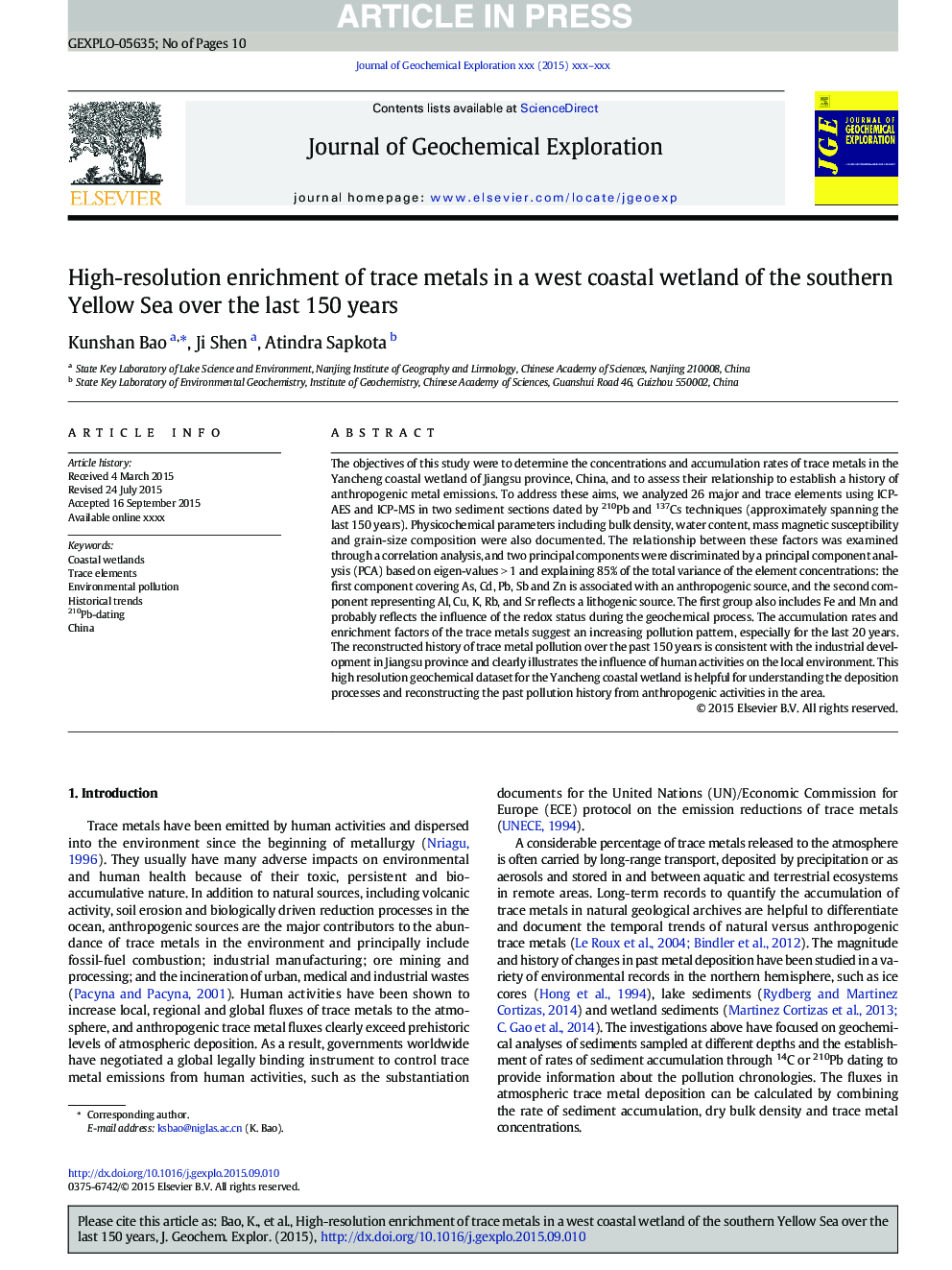| Article ID | Journal | Published Year | Pages | File Type |
|---|---|---|---|---|
| 5754464 | Journal of Geochemical Exploration | 2017 | 10 Pages |
Abstract
The objectives of this study were to determine the concentrations and accumulation rates of trace metals in the Yancheng coastal wetland of Jiangsu province, China, and to assess their relationship to establish a history of anthropogenic metal emissions. To address these aims, we analyzed 26 major and trace elements using ICP-AES and ICP-MS in two sediment sections dated by 210Pb and 137Cs techniques (approximately spanning the last 150 years). Physicochemical parameters including bulk density, water content, mass magnetic susceptibility and grain-size composition were also documented. The relationship between these factors was examined through a correlation analysis, and two principal components were discriminated by a principal component analysis (PCA) based on eigen-values > 1 and explaining 85% of the total variance of the element concentrations: the first component covering As, Cd, Pb, Sb and Zn is associated with an anthropogenic source, and the second component representing Al, Cu, K, Rb, and Sr reflects a lithogenic source. The first group also includes Fe and Mn and probably reflects the influence of the redox status during the geochemical process. The accumulation rates and enrichment factors of the trace metals suggest an increasing pollution pattern, especially for the last 20 years. The reconstructed history of trace metal pollution over the past 150 years is consistent with the industrial development in Jiangsu province and clearly illustrates the influence of human activities on the local environment. This high resolution geochemical dataset for the Yancheng coastal wetland is helpful for understanding the deposition processes and reconstructing the past pollution history from anthropogenic activities in the area.
Related Topics
Physical Sciences and Engineering
Earth and Planetary Sciences
Economic Geology
Authors
Kunshan Bao, Ji Shen, Atindra Sapkota,
